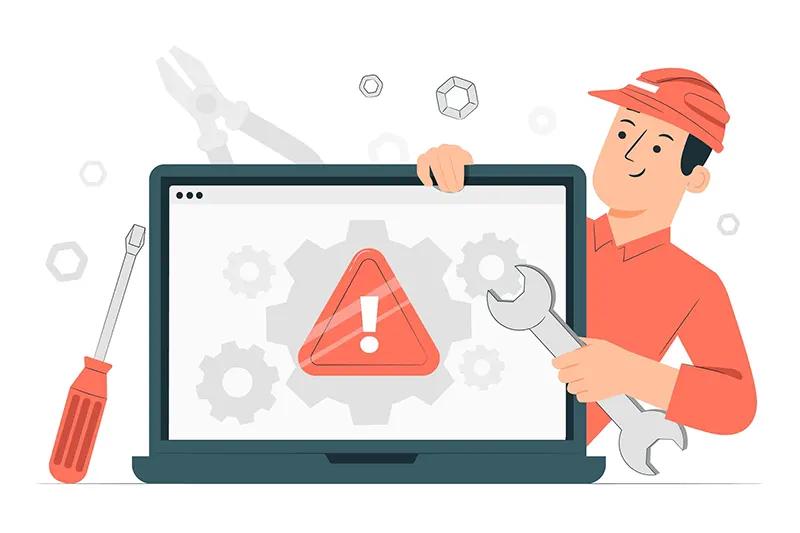Are Call Centers Still Relevant in 2023?
A year goes by, a lot of things change, technology advances and we’re back to facing the same old questions again.
If we just consider the numbers, Statista reports that the Call Center Market will grow from $339 billion to $496 billion by 2027. This in itself should be enough to convince many that Call Centers are still relevant and will continue to be so.
Then again, why are we asking this question again? The short answer would be that when technology and consumer expectations change rapidly, everything else follows.
So while the projections done by Statista might hold, the call centre market of 2027 might not be the same as it is at present.
Thus, to anticipate what changes may happen, we’re left asking the question, “Are call centres still relevant in 2023?”
Let’s find answers to this question then, shall we?
How Do Businesses/Industries Become Irrelevant?
Two factors determine how relevant a Business or Industry remains. These are as follows:
Advancing Technology
Advancing technology has been responsible for the demise of a lot of thriving industries that could not keep up with the changes.
A good example of this would be the consumer radio industry. A few decades ago when televisions weren’t so readily available, the primary means for entertainment and news broadcast was radios.
Every household had radios and the industry was booming. As technology advanced and televisions became widely available and affordable, radios were sidelined and an entire industry almost disappeared.
A more recent example of this would be the demise of the personal music player industry at the hands of mobiles and the smartphone industry.
Changing Consumer Expectations
The second factor is the changing consumer expectations. Many factors can cause a shift in consumer expectations.
A good example of this is the ongoing shift towards the use of carbon-neutral mobility. People are concerned about the environmental impacts of cars and other vehicles. They’re actively seeking out carbon-neutral alternatives.
Another example would be the rise of content streaming platforms and how they made traditional retail and distribution of entertainment media.
Earlier one had to purchase and maintain a physical library of moves, music and other entertainment media. Doing a similar setup in digital form was also time-consuming and tedious.
Streaming platforms allowed consumers to consume entertainment media without having to own, manage or store any of it. Not surprisingly so, streaming platforms have become a dominant force in the entertainment industry.
With that, I'm sure you now understand the two main factors that render businesses or industries irrelevant.
Let's now move on to understanding the factors that pose a risk to the relevance of call centres!
Factors That Pose A Risk To The Relevance of Call Centers
One may think that advancing technology poses the biggest risk to the relevance of call centres. That, however, is far from the truth. Even changing customer expectations are at play here.
We shall dive deeper into it and consider all the risk factors in detail.
Demographic Shifts In The Market

A peculiar thing about each generation is that they’re most comfortable with the sets of technologies they grew up with.
Subsequently, the Baby Boomers and Gen X are most comfortable with telephones, televisions, radios, fax and older pieces of technology and ways.
Then we have the Millennials and Gen Z who grew up in the age of the internet with technologies such as email, instant messaging, video calls, etc.
Until a few years ago, it was the Baby Boomers and Gen X who formed the bulk of the consumer in the market. That, however, has changed, it's the millennials and Gen Z who now occupy that spot.
Thus, while older generations prefer calls, younger generations prefer having options to interact using different channels of communication.
If this change becomes significant enough, it can render call centres irrelevant.
Rise In Social Media Usage

The younger generations spend most of their time on social media platforms, seldom hopping from one platform to another. Businesses of all sizes have had to increase their presence on social media to stay connected with them.
Whenever a customer belonging to this group faces any trouble with their purchase, they hop onto a social media platform to voice their complaint. Thus, businesses have to be proactive and provide customer service via these platforms.
This means fewer people are picking up their phones and calling customer service numbers to voice their complaints and seek resolution.
Such preferential changes in customer behaviour also pose a risk to the relevance of call centres.
Rising Consumer Preference For Self-Help Portals

The younger generations are far more self-sufficient and independent compared to the older generations. They prefer to troubleshoot problems by themselves rather than seek qualified help.
Thus businesses have had to set up self-help portals, detailed product and service documentation, troubleshooting guides, etc. to aid such customers.
There are platforms such as Quora and Reddit too where customers can find solutions and fix the problems they’re facing.
As fewer and fewer customers are seeking out help, this has led to a significant drop in call volumes for call centres.
In the event that his trend continues to pick up, it can pose a significant risk to the relevance of call centres.
Improving Conversational AI Assistants

We have had Siri, Alexa, Bixby and Google Assistant helping us out in our day-to-day tasks for quite some years now. They’ve come a long way since they came to be and are improving with each passing day.
A lot of these AI assistants are quite capable of helping users find solutions to any problems they may be facing.
If there is a solution for some problem posted on the internet, any AI assistant can furnish it to a user when prompted to.
Recently, ChatGPT has been in the news showcasing how exceptionally capable Conversational AI Assistants have gotten at assisting users.
Thus, users that may have called a call centre seeking help might just opt to ask their AI Assistant for it. This continued improvement in technology also poses a risk to the relevance of call centres.
Use Of Chatbots For Customer Service

Most of the time, customers call the respective call centres to seek assistance for what usually is a minor problem. These minor hiccups can be resolved with a simple set of instructions in most cases.
Realising this, many businesses have trained chatbots and created detailed frameworks of instructions for troubleshooting minor problems.
Chatbots can now interact with users, pinpoint the issue with user inputs and present a step-by-step troubleshooting procedure. Implementing such a system has resulted in lower operational costs and better customer experience.
This has resulted in a loss of significant call volume for the call centres. Thus, Chatbots for customer service pose a rise to the relevance of call centres.
The Future Of Call Centers Is Not Bleak!
Learning all that might have left you feeling that there is no place for call centres in the future. The good thing is that it's not true and there is no need to panic just yet.
Call Centers will be present even in the future and play an important part in customer service and support. They, however, may not be the same or operate in the same manner as they do at present.
We’re all aware that any form of non-verbal communication is not effective when it comes to resolving complex issues. Moreover, textual communication is quite frequently known to create misunderstanding and lead to misinterpretations.
Thus, there will always be a place for call centres when it comes to customer service and support.
In case you wish to future-proof your Call Center business, here are some tips for you!
Future-proofing Opportunities For Call Centers
There are some areas of customer support where call centres are irreplaceable. Focusing on those and developing more capabilities will help call centres stay relevant and future-proof their existence.
Customer Support For Leading Edge Or Niche Technologies

Leading edge or niche technologies usually suffer from a lack of documentation, troubleshooting guides and an experienced community to assist.
Thus, the only feasible way to provide customer support for such endeavours is via call centres. This would require you to train your staff pertaining to the said technology.
The costs incurred for training are usually offset by the premium prices paid by developers of these technologies for handling customer support operations.
Customer Support For High-Value Clientele

Think of this as running a concierge service. The only difference is that your clients are usually your big-spending, high-priority customers and you’re providing customer support.
The prerequisites for this are that you have to provide an exceptional customer experience, personalise customer support and maintain good personal relations on an individual level.
The extra efforts so put in are more than offset by retaining high-value customers longer and maximising their TLV.
Servicing Industries That Require Verbal Interactions

There are several industries where a verbal conversation is a must. An example of this would be the Covid Support Helpline set up by the National Health Services in the UK.
The helpline was set up to assist individuals with managing the effects of the lack of social interaction on their mental health during the duration of the lockdown.
Another example would be the emergency services industry. These industries operate at various levels and verbal interaction is a prerequisite here.
Servicing such industries would enable you to future-proof your call centre operations and stay relevant in the long run.
Conclusion
Call centres aren’t going anywhere. They will be an important part of customer service and support operations long into the future.
Things will change though, as technology advances and customer preferences change. Call centres will not exist in the manner and scale at which they do at present.
However, if you follow the advice given in this blog or find similar alternatives, you will be able to stay relevant long into the future.
In fact, if you act on these tips right away, chances are you’ll build up expertise in the suggested fields. Thus, you’ll be able to become a market leader.
























































































































